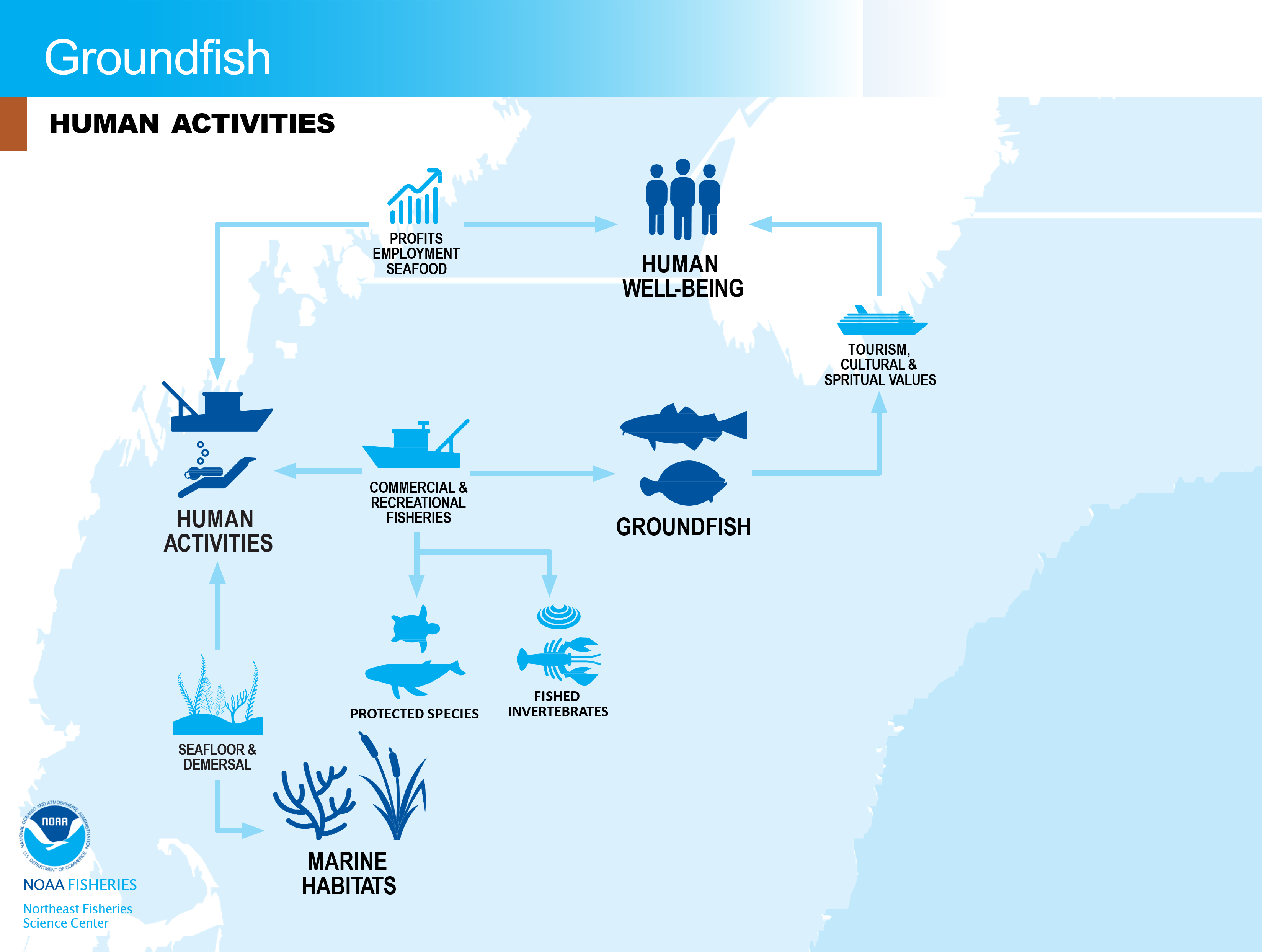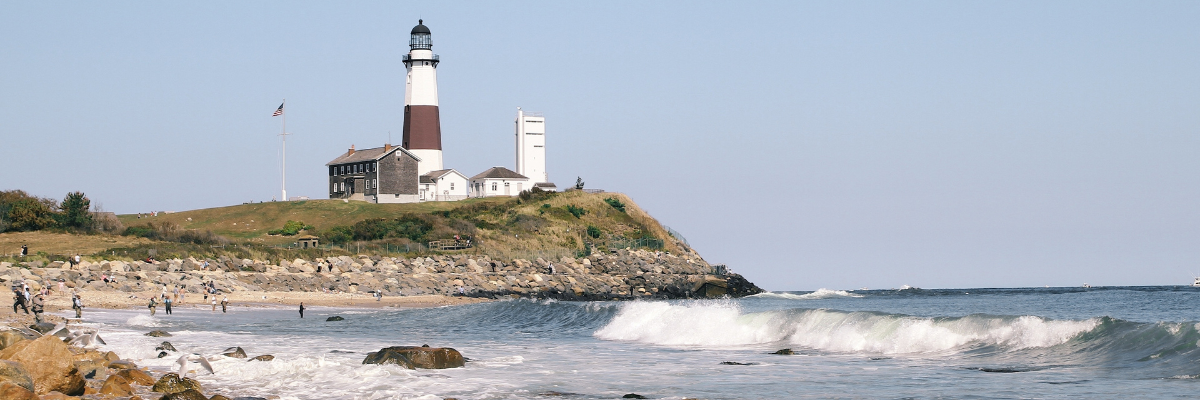Overview
Groundfish are those species that live near or on the bottom of the sea floor. Species included in this group are Atlantic Cod, Haddock, Acadian Redfish, Winter Flounder, and many others. Throughout the Northeast, there is a rich tradition of fishing for groundfish with fisheries dating back to the 16th century (Murawski et al. 1997). Besides being a popular source for food, they have a strong cultural influence on the region. A popular tourist destination in Massachusetts is called Cape Cod, named after the aforementioned Atlantic Cod. Extensive fishing pressure and environmental changes in the region caused a collapse of several groundfish stocks in 1990s (Halliday and Pinehorn 2009). Some of the stocks have recovered while others are still struggling due to continued overfishing, warming ocean temperatures and other environmental factors.
- Gulf of Maine
The Gulf of Maine’s deep-water basins are ideal for groundfish species that prefer deeper water. Throughout the Gulf you can find Acadian Redfish and Witch Flounder both of who prefer deep water. In addition, several hakes species are found in the Gulf including White Hake. Recent bottom trawl surveys show a long-term increase in groundfish biomass for both the spring and fall. Habitat shifts, such as a deepening of Atlantic cod stocks in Gulf of Maine and the nearby Scotian Shelf region, have been attributed to both size-selective exploitation and ocean warming. (NEFSC 2018, Frank et al. 2018).
- Georges Bank
Fishing has had some of the highest impacts on Georges Bank groundfish (Fogarty and Murawski 1998). However, there have been significant increases in fall survey biomass since the 1990s. A similar trend is not present in the spring survey data although the biomass has been above the mean since 2014. Gains in biomass have largely been driven by large year classes of Haddock. Other important groundfish species such as Atlantic Cod and Yellowtail Flounder have not shown signs of recovery. Deeper water species such as those mentioned in the Gulf of Maine are less prevalent on Georges save for the shelf break that forms the southern boundary of the bank.
- Mid-Atlantic Bight
The composition of groundfish (also called demersals) in the Mid-Atlantic is distinct from that of Georges Bank and the Gulf of Maine; species such as Scup and Atlantic Croaker tend to be more prevalent than the more northerly-distributed species like Atlantic Cod, Haddock, and Yellowtail Flounder. There have been significant increases in the biomass of the southern groundfish species in both the fall and spring surveys. Scup, Black Sea Bass, and Atlantic Croaker contribute the most to the biomass trend in the spring. While Atlantic Croaker has been the most abundant Mid-Atlantic groundfish in the fall. Many of these species are projected to expand their distributions in the face of ocean warming over the next century (Kleisner et al. 2017).
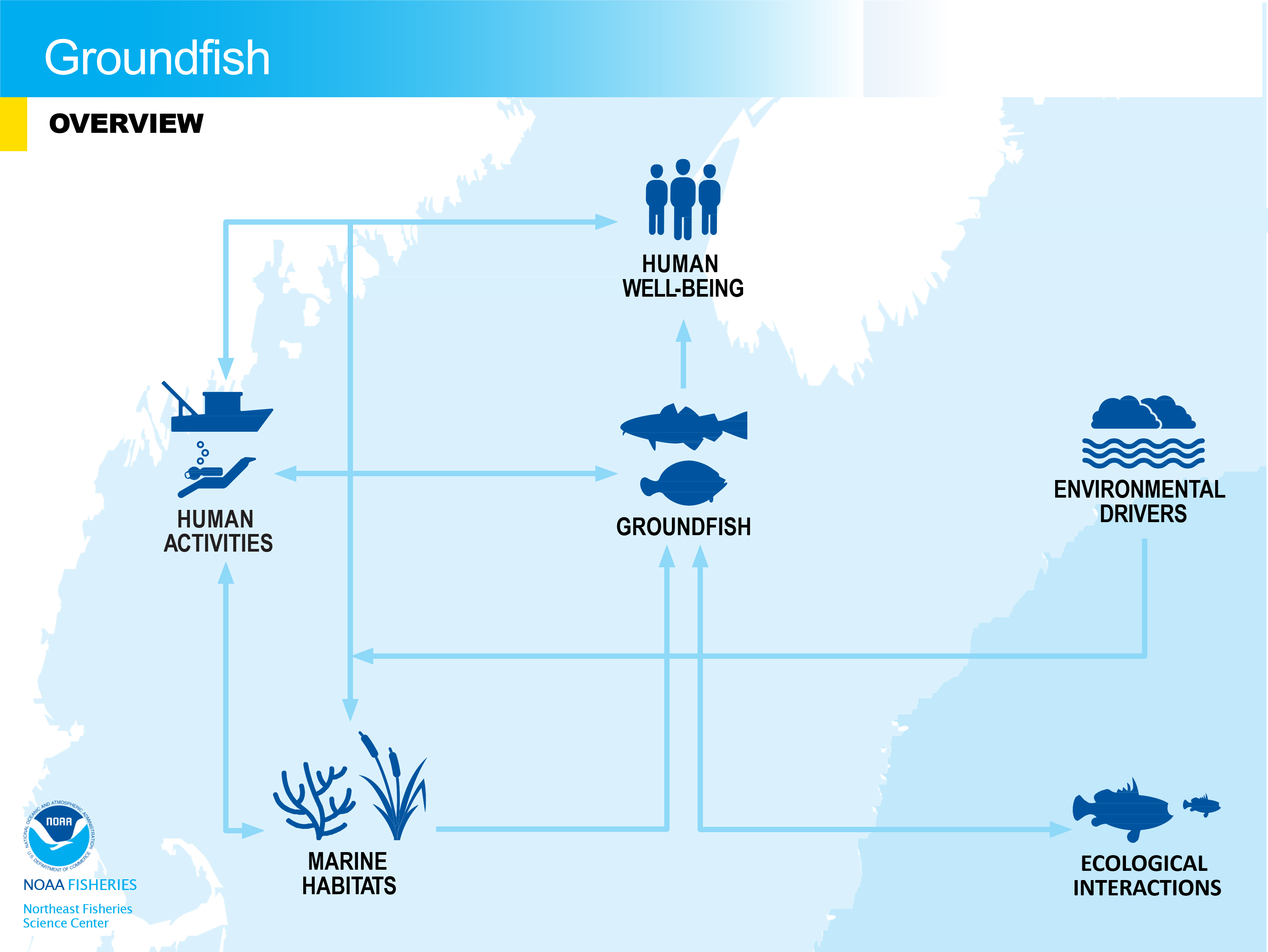
Ecological Interactions
Groundfish inhabit several different trophic niches in the ecosystem. Many feed primarily on bottom-dwelling organisms such as polychaetes and amphipods while others feed on other fish species. Several of the groundfish species, like Silver Hake, are common prey items in larger predators including other groundfish (as well as other Silver Hake!). (Smith and Link 2010, Link et al. 2012). Larger species such as Atlantic Cod will change their feeding habits as they age, transitioning from feeding primarily on bottom-dwelling organisms to more of a fish-based diet. Overall, groundfish tend to be generalist feeders and as such are not overly reliant on any one prey species.
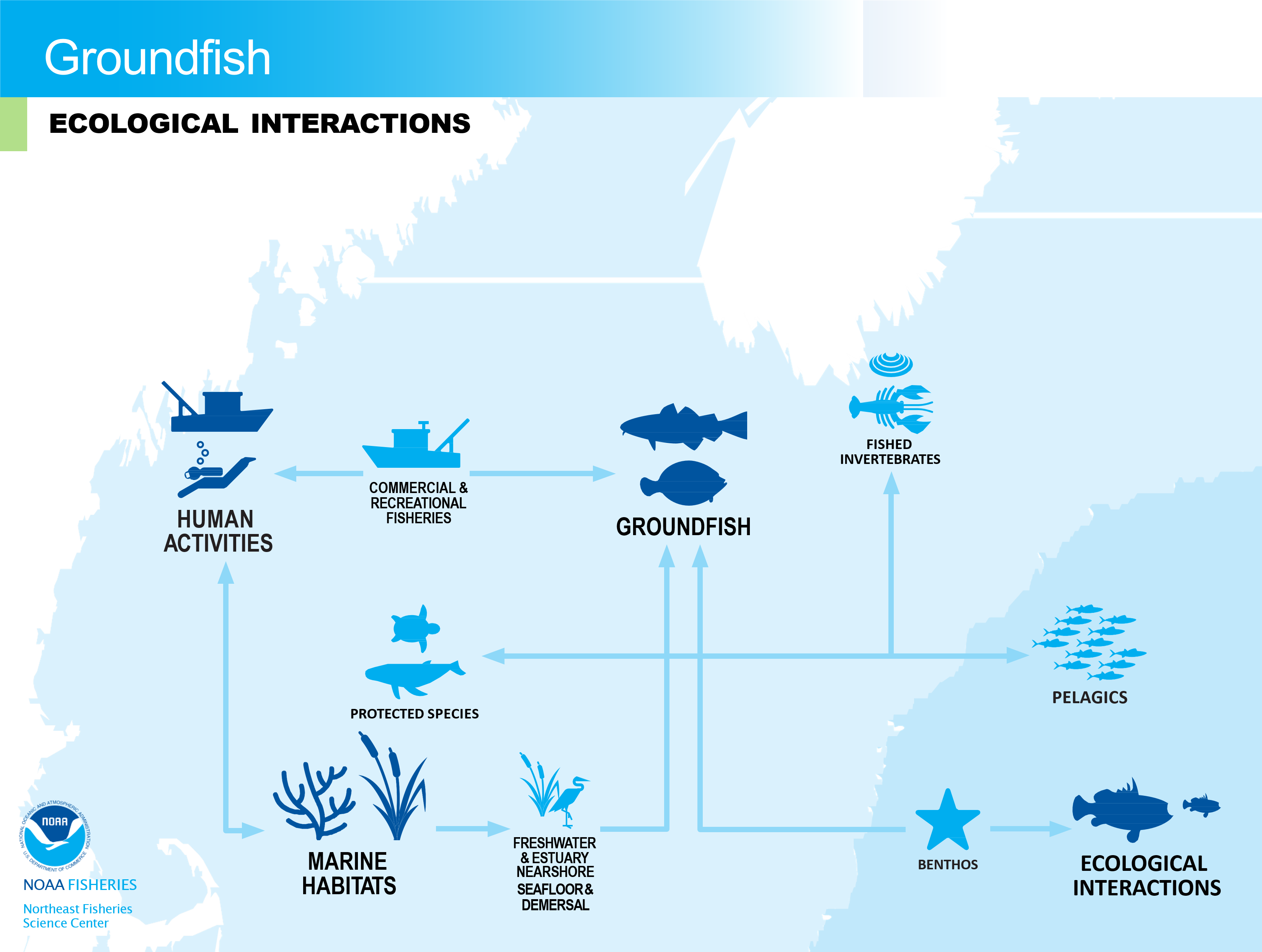
Environmental Drivers
As important as the pressures exerted by commercial fishing are on groundfish, external environmental drivers also play a significant role. Many of the northern groundfish species found on Georges Bank and the Gulf of Maine are at the southern extent of their range. Warming waters and other environmental factors are driving them out of the region (Kleisner et al. 2017). Warming waters are also expanding the range of the southern groundfish species found in the Mid-Atlantic. Habitat plays an important role in the success of groundfish populations. Many of the species prefer a variety of habitat structures that can be disrupted by human activities such as dredging or offshore energy development.
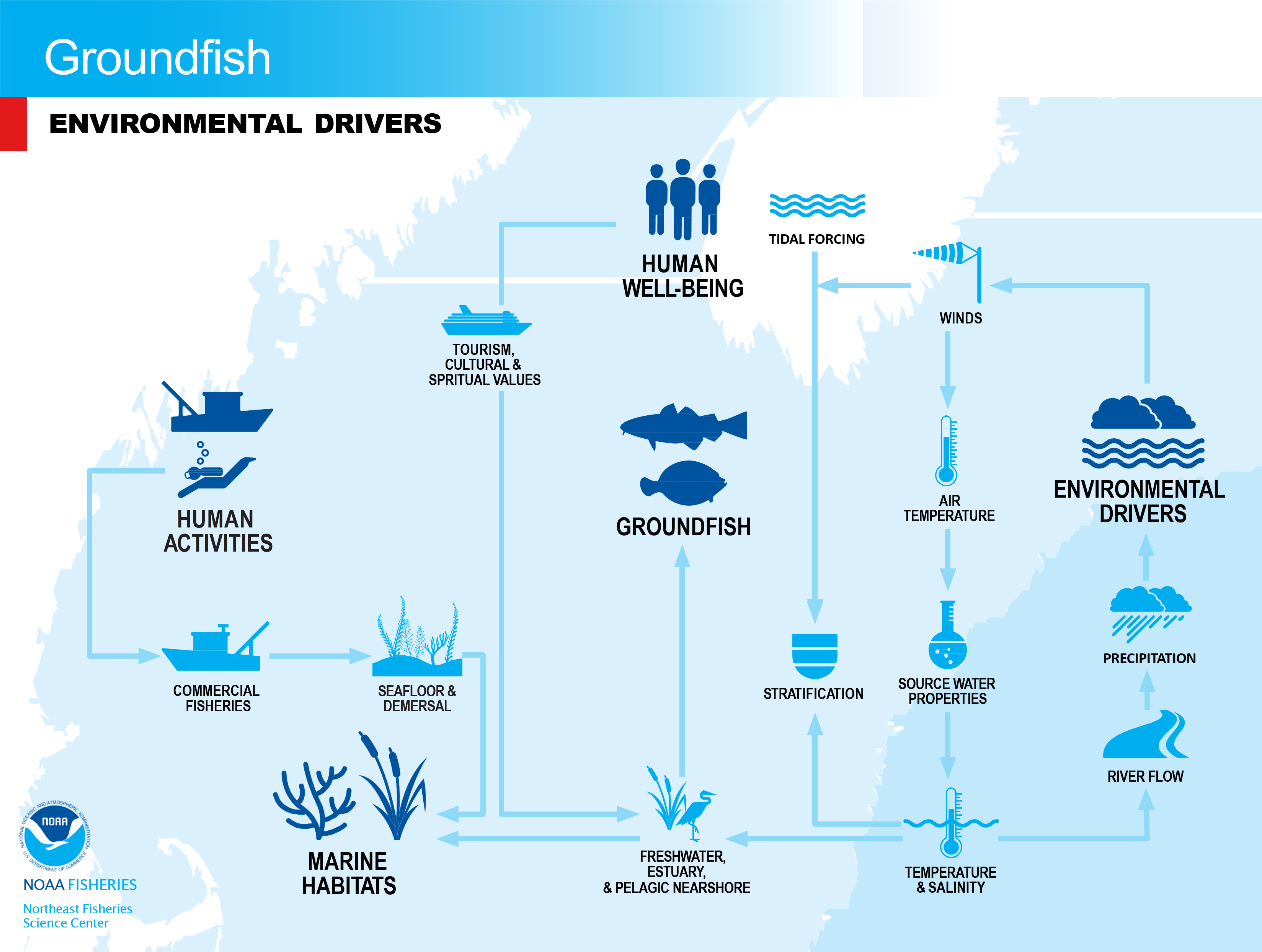
Human Activities
Groundfish throughout the region have supported large scale commercial and recreational fisheries. Landings records for Atlantic Cod and other groundfish extend back as far as the early 1800s (Murawski et al. 1997). Fishery resources on Georges Bank and the Gulf of Maine are shared between the United States and Canada. Special management procedures are in places for Atlantic Cod, Haddock, and Yellowtail Flounder (see TRAC). Mid-Atlantic groundfish species such as Summer Flounder and Black Sea Bass support large commercial and recreational fisheries throughout their range. As previously mentioned, groundfish are also iconic to the region. Several major ports throughout Northeast developed around the groundfishing industry (NMFS 2009). Atlantic Cod is the state fish for Massachusetts and a sculpture of a cod fish hangs in the Massachusetts House of Representatives.
